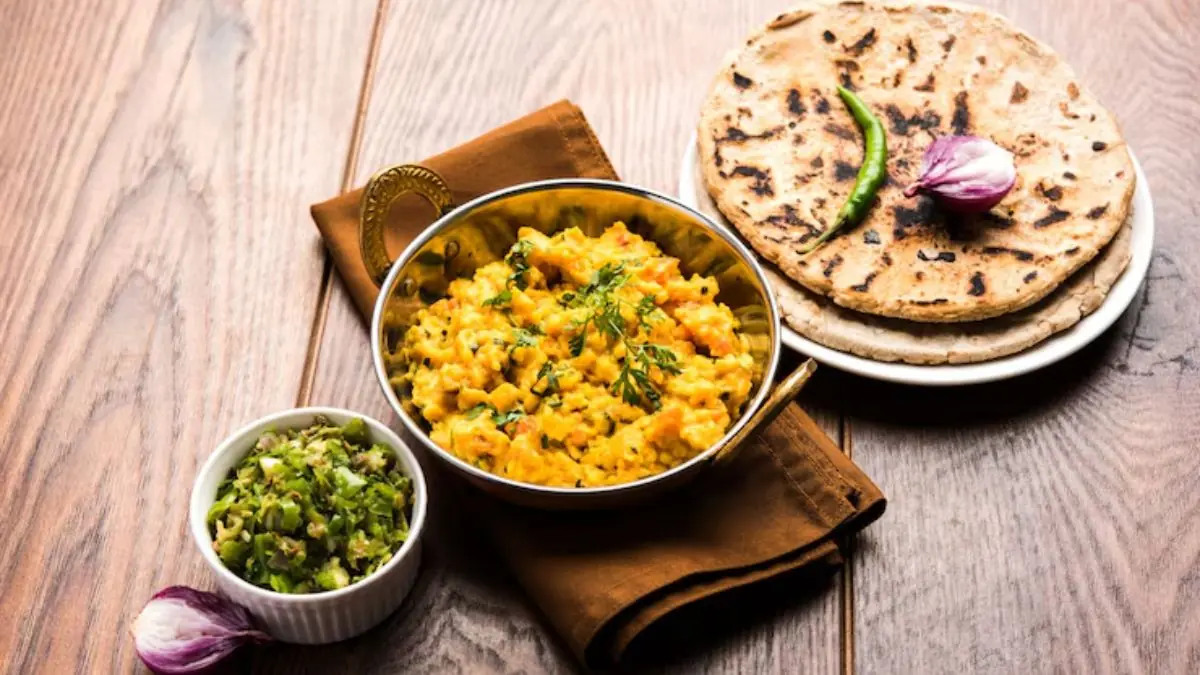Regional food in India not only comprises unique dishes but is also a gateway to understanding the landscape, communities, history, and other nuances of the area. It is storytelling in its simplest form if you are looking to comprehend beyond taste and notes. From urban households to agricultural lands, what people eat, how they prepare a dish, and the ingredients used, each step lets you turn another page in the book of the evolution of eating habits across this diverse country.
Maharashtrian zunka bhakr is one such dish. It is an example of the resourcefulness and resilience of the rural community of the state. This agrarian heritage is a traditional fare made with spices and gram flour. The result? Zunka takes the centre stage while bhakr (bhakri), a kind of flatbread, accompanies it on the side. The evolution of this dish over the decades reflects the culinary shifts in Maharashtra.
It is believed that this dish was born out of necessity and not an accident. It was first prepared b
Regional food in India not only comprises unique dishes but is also a gateway to understanding the landscape, communities, history, and other nuances of the area. It is storytelling in its simplest form if you are looking to comprehend beyond taste and notes. From urban households to agricultural lands, what people eat, how they prepare a dish, and the ingredients used, each step lets you turn another page in the book of the evolution of eating habits across this diverse country.
Maharashtrian zunka bhakr is one such dish. It is an example of the resourcefulness and resilience of the rural community of the state. This agrarian heritage is a traditional fare made with spices and gram flour. The result? Zunka takes the centre stage while bhakr (bhakri), a kind of flatbread, accompanies it on the side. The evolution of this dish over the decades reflects the culinary shifts in Maharashtra.
It is believed that this dish was born out of necessity and not an accident. It was first prepared by the agrarian community who have access to simple and affordable ingredients like besan, bajra, jowar, and spices. The different kinds of flour are the source of carbohydrates and fibre for people who spend hours in the sun cultivating ingredients for the whole country. The elements in zunka bhakr fuel labourers and farmers, helping to sustain their energy through long working hours and can easily be packed in tiffins. While zunka is a dry sabzi, its evolved cousin, pithla, is slightly watery, but both can easily be scooped into bite-sized bhakr.
Did you know that it was referred to as ‘the peasant’s meal’ because it is a nutritious and unpretentious combo that nourishes the body while satisfying hunger. It has stayed true to its roots and inception for generations and mirrors the down-to-earth nature of Maharashtrian cuisine. It is comforting and flaunts the rustic charm of the state’s countryside. Serve with thecha, white butter, and freshly sliced onions; the dish screams comfort.
Zunka bhakr is among a few dishes that have not evolved gradually while staying true to its roots. It might be a farmer’s dish, but now it is a part of the menus at restaurants. It has transcended class and adapted to suit diverse palates. People add vegetables like capsicum and cabbage to zunka and prepare bhakr using rice flour. In the 1990s, the dish gained popularity in the political space when the government introduced ‘Zunka Bhakr’ scheme to subsidise the dish and make it more accessible to the unemployed population. This humble meal is gluten-free, healthy, and flavourful. Have you tried it yet?








